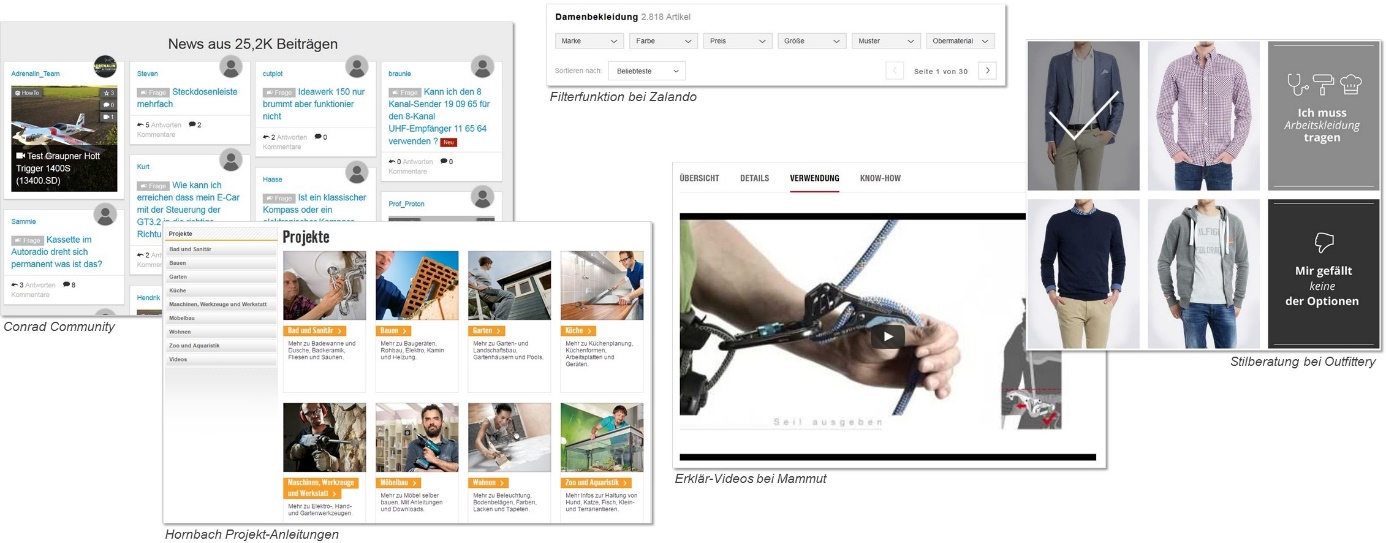How product information
change our lives
Business without product data? Impossible!
Consumers’ expectations grow with every new feature and every technological advance.
Product information is everywhere
Product information is like advertising: it is always there, wherever we are. We are often not aware of it – or take it for granted. Prices at the gas station, food ingredients, our new sports shoes’ care instructions. If they are missing, we claim them: “What’s in this bread roll?” “Can I use these shoes on a via ferrata?” That is the crux of the problem for the seller: customers don’t want to have to ask for information.
Changed purchasing behaviour
Customer and purchase behaviour in the retail sector has changed drastically in recent years – and will keep evolving. The internet brought about unexpected transparency: assortments, prices, availabilities and delivery times may be compared with just one click. User-generated content and consumer ratings have a considerable impact on purchase decisions – fostered by the seemingly unlimited desire to communicate via social networks. The rapid adoption of smartphones seemed to sound the death knell for brick-and-mortar retailers. Information is available everywhere and at any time. Consumers scope out products and seek professional advice at a local retailer and then buy online – from the cheapest source, of course. The logical consequence: many online shops compete only on price.
However, consumers go one step further: They don’t only get information in-store. They research online to learn about items before purchasing – at home, 24 hours a day. Niche market players and selected stores are faced with the challenge of transferring their expertise online to compete more effectively.
Increasing demands on product information
If a retailer fails to provide the right information at the right time, he will lose his competitive advantage and will not sell his product. The consumers’ need for information grows with the range of products on offer. Detailed product information and emotional texts create trust and have a positive effect on purchasing decisions. Retailers, manufacturers and search engines are well aware of it. The consequences? The amount of information available increases – and, with it, the expectations of consumers. Because if they like what they received, they will want it again and again. High-quality images with a 360° view, zoom features, product videos, images showing the product in the selected colour, target group-specific texts, product reviews. Consumers have become used to these features and even expect them. Smart retailers are always on the lookout for value-added features and services to differentiate their market offering. It’s a vicious circle!

Online market places like Amazon, with their seemingly unlimited assortment, are a real challenge. Consumers won’t accept being offered only a limited range of goods and services. If something is not available, they won’t seek an alternative product from those available at the retailer’s shop: instead, they will turn to another shop for the product they wish to buy.
Omnichannel Customer Journey
Consumers will no longer accept any restrictions in terms of consumer behaviour. They use the many channels at their disposal in parallel for different parts of the decision-making and purchasing process and are comfortable mixing their points of interaction during their Customer Journey. Online shops, web portals, local stores, mobile apps, print catalogues – the number of touch points will continue to grow.
For brands, retailers and manufacturers alike, multi-channel strategies are therefore essential for business success. Omnichannel commerce, however, is placing new demands on Product Information Management (PIM). Companies must redefine the way they obtain, manage, edit and distribute product information. But it is worth the effort: Product Information Management as part of a strategy to differentiate your business offers great potential and many opportunities.
GET SOCIAL
IN THE LINE WITH THE TOPIC
